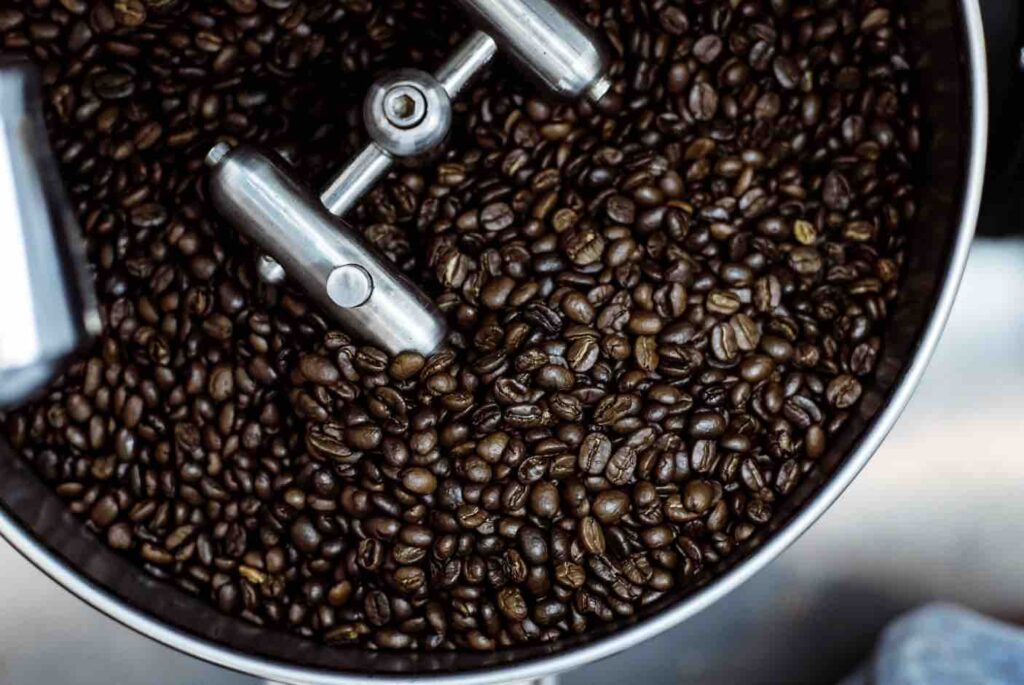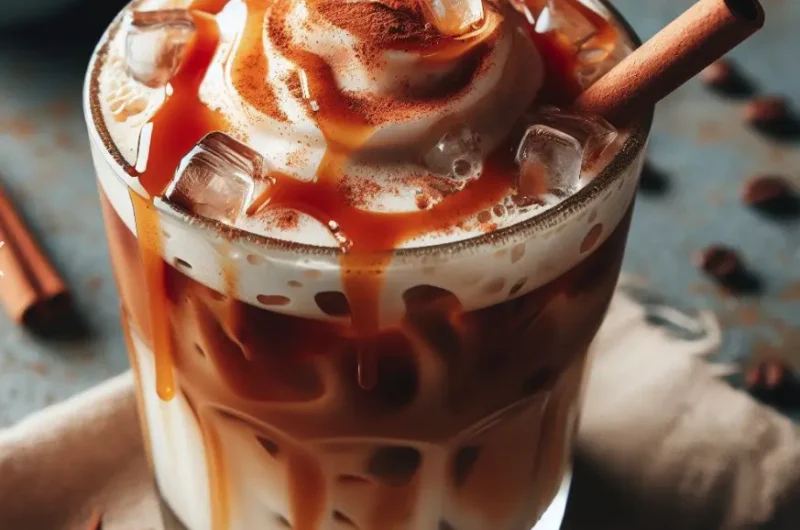For coffee lovers worldwide, the allure of a perfectly pulled shot of espresso is undeniable. The rich, concentrated flavor, crowned with a velvety crema, is a true testament to the art and science of coffee. However, when it comes to enjoying espresso, timing is everything.
In this comprehensive guide, we will delve deep into the world of espresso and explore how long it lasts in its various forms: whole beans, ground coffee, and the liquid gold itself. We’ll also uncover the best practices for preserving that signature flavor, so you can savor your espresso to the fullest. Plus, how long is espresso good for in its various forms will be discussed. And, we’ll share a delicious Affogato recipe for your stored espresso beans!
The Lifespan of Whole Espresso Beans
Let’s begin our journey with the foundation of all espresso shots: the beans.
How long is espresso good for in bean form: Espresso beans, the building blocks of that perfect shot of espresso, come in a delightful spectrum of roast levels, ranging from the ethereal light to the robust dark. Lighter roasts, known for their intricate and delicate flavor profiles, are a symphony of bright and fruity notes. However, their exquisite taste comes at the cost of a shorter shelf life.
When stored in a meticulously sealed, airtight container at room temperature, these beans maintain their peak freshness for a span of about 2 to 3 weeks.
On the flip side, the allure of darker roast espresso beans lies in their bold and hearty flavors, often accompanied by a hint of smokiness. These beans, with their robust character, tend to have a longer shelf life when stored under the same optimal conditions. The rich flavors of dark roast beans can endure for approximately 1 to 2 months, making them a more forgiving choice for those who appreciate longevity in their coffee supplies.
The choice between light and dark roast espresso beans ultimately hinges on your preference for either the delicate dance of nuanced flavors or the deep, full-bodied embrace of boldness. With this in mind, how long is espresso good for in bean form will vary depending on the roast level.
To ensure the best taste, the best way is to store your leftover espresso beans in an airtight sealed container in a cool, dry place, away from direct sunlight and temperature fluctuations. This will help preserve the flavor compounds and aroma that make espresso so beloved. Coffee can be stored in this form for 12 months.
How much caffeine will you lose by storing it? None since the caffeine does not evaporate or dissipate. Keep in mind, how long is espresso good for will also depend on your storage method!
Upon removal from storage, be sure to check your beans for freshness. A quick visual and olfactory check can tell you if your espresso beans are still in their prime. Fresh beans should have a glossy sheen and a strong, pleasant aroma. Stale beans may appear dull and emit a flat or even slightly rancid odor.
The next stop on our caffeinated journey is the Transitioning to Ground Espresso
How long is espresso good for in ground form: Once you’ve selected the perfect beans, the next step is grinding them into the consistency needed for a shot of espresso. However, once you’ve ground your beans, the clock starts ticking, and the countdown to freshness begins.

Photo Credit: Gregory Hayes
For devoted espresso aficionados, the “15-minute rule” is a sacred commandment that governs their coffee ritual with unwavering precision. This revered rule stipulates that ground coffee, especially when destined for the espresso machine’s portafilter, should be put to use within a mere quarter of an hour from the moment of grinding.
The rationale behind this seemingly strict time frame is rooted in the sensitivity of coffee grounds to their environment. Coffee, in its ground form, is incredibly susceptible to the intrusive advances of oxygen, an arch-nemesis that can swiftly dismantle the intricate symphony of flavor compounds trapped within the beans.
Espresso, being the concentrated form of coffee artistry that it is, demands nothing less than the finest orchestration of flavors. In pursuit of this perfection, espresso enthusiasts understand that the act of grinding liberates these volatile flavor compounds, rendering them increasingly vulnerable to oxidation.
As oxygen mingles with the ground coffee, it initiates a cascade of chemical reactions that gradually diminish the very qualities we hold dear in our espresso – the vibrant aromas, the nuanced flavors, and the elusive crema.
By adhering to the sacred 15-minute window, espresso devotees ensure that the culmination of their efforts yields the most spectacular results that mirror the coffee shop experience as closely as possible. The freshly ground coffee, brimming with its full potential, is poised to create an espresso shot that transcends mere caffeination.
It promises an aromatic crescendo, a symphony of taste, and an alluring crema – a harmonious trifecta that defines the quintessential espresso experience. In this disciplined adherence to the 15-minute rule, espresso lovers find their artistry elevated to its zenith, forging a connection with the very essence of coffee craftsmanship.
In short, to maintain maximum flavor, grind only what you need for your espresso shot and brew it immediately. This practice ensures that you get the most out of your coffee grounds. To maximize the lifespan of ground espresso, use airtight containers to store any leftover grounds. Make sure to seal the container well to prevent exposure to air, moisture, and light.
Storing ground coffee in small portions can help minimize exposure to oxygen each time you open the container. Some people say you can store ground espresso for months in this way, but I would recommend using it within 1 week since it has already been exposed to air during the grinding process.
But if you must, it is a good idea to write an expiration date on your container so you know when its prime has passed. Grinding has a big impact on how long espresso is good for.
Our last stop on our drip through the fascinating world of coffee is Brewed Espresso
How long is espresso good for in liquid form: Now, let’s focus on the final form of espresso—the liquid elixir itself. Something magical happens when you filter hot water through ground espresso beans. Espresso shots are best enjoyed fresh, but there are still ways to make the most of your brew if you can’t consume it immediately.
The golden rule of espresso is to consume it immediately after brewing. Espresso is at its peak flavor within the first few seconds after extraction. The rich crema, formed by the release of carbon dioxide during brewing, starts to dissipate almost instantly. Waiting too long can result in a loss of flavor, leaving you with a flat, bitter taste.
Preservation Methods to store espresso that has been brewed

Photo Credit: Nathan Dumlao
One such method is the use of a thermal carafe – an unsung hero in the world of espresso connoisseurship. This remarkable vessel is designed to maintain the ideal temperature of your freshly brewed espresso for an extended duration. By pouring your espresso into an insulated cup or thermal carafe, you grant it a temporary sanctuary, shielding it from the inevitable drop in temperature that occurs in open air.
The thermal carafe, with its double-wall insulation, ensures that your espresso remains piping hot and brimming with flavor for a longer period than it would in an ordinary cup. As you take each sip, you can relish the comforting reassurance that your espresso’s rich complexity remains intact, a testament to the benefits of temperature control.
Additionally, for those who seek an elegant solution, there exist specialized espresso storage canisters. These canisters, akin to the vaults of coffee preservation, feature airtight seals that create a secure environment for your freshly brewed espresso. By transferring your espresso shot into one of these dedicated containers, you harness the power of isolation from external elements.
The airtight seal ensures that no oxygen infiltrates your precious brew, allowing the flavors to remain locked in their pristine state. Each time you open the canister, you are greeted by an aromatic burst of freshness, a sensory reminder of the lengths taken to preserve the essence of your espresso.
In this way, these methods offer a lifeline to espresso lovers who wish to linger over their shots without compromising on quality. Whether it’s the warmth of a thermal carafe, or the elegance of storage canisters, each method offers a means to stretch the moment, allowing coffee enthusiasts to savor the flavors and aromas that define the essence of espresso. Regardless of the method, you should not store your brewed coffee like this for more than a day.
You can also freeze your brewed coffee, but I would not recommend it since heating back up would likely result in bitterness and extra work. Do yourself a favor and just brew a fresh shot or pot of hot coffee.
Beyond Espresso Drinks
Espresso isn’t just limited to the classic shot or cappuccino. Its concentrated form and intense flavor make it a versatile ingredient for various coffee drinks. Let’s explore some creative uses for espresso:
Iced Coffee: Espresso can be the secret ingredient to creating a rich and flavorful iced coffee. Its bold flavor stands up well to ice and milk, delivering a satisfying cold coffee drink.
Affogato: This Italian dessert consists of a scoop of vanilla ice cream or gelato drowned in a shot of espresso. It’s a delightful way to combine the richness of espresso with the creaminess of ice cream.
FAQS
1. Does Espresso Go Bad When It Sits?
A: Absolutely, espresso does go bad. Once brewed, espresso begins to lose its optimal flavor and aroma. Oxidation kicks in, altering its taste profile.
2. Can You Save Leftover Espresso?
A: You can, but there’s a catch. Stored espresso won’t have the same fresh, vibrant characteristics. It’s best used in recipes or iced coffees where the change in flavor won’t be as noticeable.
3. How Long is Left Out Espresso Good For?
A: The golden window is about 30 minutes to an hour. Beyond that, the taste significantly deteriorates. For health reasons, it’s not advisable to consume espresso left out for over 2 hours.
| Time After Brewing | Quality of Espresso | Recommended Consumption? |
|---|---|---|
| Immediately | Excellent | Highly Recommended |
| 10 Minutes | Good | Acceptable |
| 30 Minutes | Fair | Not Ideal |
| 1 Hour | Below Average | Not Recommended |
| 2 Hours | Poor | Avoid Drinking |
| Overnight | Bad | Definitely Not |
4. Is it Bad to Drink Old Espresso?
A: From a taste perspective, yes. However, if it’s been stored properly (in a cool, dark place), it’s not necessarily harmful within a day. Beyond that, the risk of bacterial growth increases.
5. What is the 10 Second Rule for Espresso?
A: This rule states that espresso should be consumed within 10 seconds of being brewed for the best taste experience. It’s a guideline highlighting how quickly espresso can start to lose its peak flavor.
Affogato
Course: Breakfast, DrinksCuisine: ItalianDifficulty: Easy1
servings5
minutes5
minutesAffogato is a simple yet indulgent Italian dessert that marries the rich bitterness of espresso with the sweet, creamy goodness of ice cream for a delightful treat that’s quick to prepare and a perfect ending to any meal.
Ingredients
1 shot of freshly brewed espresso or strong coffee
1-2 scoops of high-quality vanilla ice cream or gelato
Optional: A drizzle of chocolate sauce, caramel sauce, or liqueur (e.g., Amaretto)
Directions
- Brew the Espresso/Coffee:
- Brew a shot of espresso using an espresso machine or make a strong cup of coffee using your preferred method. You can use decaffeinated coffee if you prefer.
- Prepare the Ice Cream:
- Scoop 1-2 generous scoops of vanilla ice cream or gelato into a heatproof serving glass or cup.
- Pour the Espresso/Coffee:
- Immediately after brewing, pour the hot espresso or coffee over the scoops of ice cream.
- Optional Flavors:
- If desired, add a drizzle of chocolate sauce, caramel sauce, or a splash of liqueur like Amaretto for extra flavor.
- Serve Immediately:
- Serve the affogato immediately while it’s hot and the ice cream is partially melted. The combination of hot coffee and cold, creamy ice cream creates a delightful contrast in flavors and textures.
- Enjoy:
- Use a long spoon to mix the coffee and ice cream together before taking each heavenly spoonful.
Espresso in Baking: Espresso powder or finely ground espresso beans can be used to enhance the flavor of baked goods like brownies, cookies, and chocolate cakes.
In the world of coffee, espresso stands as a concentrated form of coffee artistry. Its rich flavor, velvety cream, and potent caffeine kick make it a favorite among coffee lovers. To ensure that you’re savoring espresso at its best, remember these key points:

- Choose espresso beans that match your roast preference and store them in an airtight container in a cool, dry place.
- Grind your beans immediately before brewing, adhering to the 15-minute rule for maximum freshness.
- Consume your espresso shots immediately for the best flavor, but explore preservation methods if needed.
- Get creative with espresso in various coffee drinks and desserts to expand your coffee horizons.
Whether you’re sipping a classic shot of espresso, relishing a meticulously crafted cappuccino, or simply enjoying regular coffee, the essence of coffee lies in the celebration of its bold and diverse flavors. Each coffee drink is a unique expression of the art and science that coffee enthusiasts appreciate. To truly embrace this rich tapestry of taste, it’s crucial to adhere to the best practices for preserving freshness at every step of the coffee journey.
It all begins with selecting the finest coffee beans, each with its own story and unique flavor profile, and then grinding them just before brewing to capture the maximum aromas and nuances. The brewing process itself, whether it involves a traditional espresso machine, a pour-over setup, or a French press, requires careful attention to water temperature, grind size, and extraction time.
But the commitment to excellence doesn’t end there. Once the coffee is brewed, how you store it plays a pivotal role in maintaining its character. Proper storage methods, such as using airtight containers or vacuum-sealed bags, help protect your coffee from the detrimental effects of oxygen, light, and moisture.
So, as you raise your cup of espresso or any other coffee creation, whether in the quiet solitude of your morning routine or amidst the vibrant ambiance of a bustling café, you’re not just toasting to a perfect shot or a delightful cup; you’re celebrating a shared passion that unites coffee lovers worldwide – the enduring pursuit of coffee perfection.
In each sip, we find a connection to the past, a moment in the present, and a promise of more flavorful adventures in the future. It’s a journey that invites exploration, conversation, and appreciation for the incredible diversity that coffee offers.
So here’s to coffee – a true companion on life’s journey, always ready to deliver a sip of comfort, energy, and delight.
Craving More Delicious Recipes? Try these: Ginger Molasses Cookies

